Photos by Ryan Koupal
“Sir, would you like the holiday goose, or the pasta?”
Lost in a daze of trains, coal, and neck deep powder, I perk up out of my confined plane seat.
“The holiday goose, please.”
It is the 23rd of December and I’m starting the longest leg of my journey home. To get here, I drove about an hour from my house in Lake Tahoe to a friend’s house in Reno where I caught an Uber to the airport. From Reno it was a quick flight to San Francisco, a few hour layover, then a solid 12-hour flightto Munich, Germany. Another short layover where my water bottle caused quite the stir through security leading me to get pulled out of line, and the bottle to get taken away. Sweating an undesirable airport sweat born from a mixture of anxiety and many hours of travel, I barely made my connection to Moscow. Once there, I had a few hours to stretch and breath before another flight. But there was a major problem in Moscow. No ski bag.
With my layover and first ever hours in Russia being spent with luggage recovery at the airport, I reluctantly walked away wondering if my skis would in fact arrive in Abaken as promised. The more I’ve traveled internationally the more the reality of lost baggage has become all too real. It can really make or break a trip depending on where one is going, never mind at this point in the trip I was still trying to wrap my head around where I was going in the world.
Have you ever heard of Abaken? Me either. That is until I started researching skiing in Siberia some years ago. Abaken actually never popped up on my radar. That’s probably because during this journey after flying from Moscow to Abakan, crossing another slew of timezones in the process, I still had a couple hour shuttle ride, couple hour train ride, and then a short hike to reach my final destination.
Siberia is big. And to get to the village of Luzhba, my intended location, was no simple task. You can imagine why I figured I might not see my skis for this mission after they failed to show up in Moscow. But after one crazy journey of planes, trains, and automobiles I had finally arrived to a part of the world that had captured my imagination for the better part of the last decade. I figured the ski situation would sort itself out-and thankfully it did.
Several years back, a friend, an extraordinary skier and human, someone I looked up to immensely, had brought the idea up over a post dinner chat in Alaska. The vision was one of those magical exchanges that is a core component of intrepid ski culture.
Where should we go? What’s totally off the radar?
I was so fired up to have that conversation, and still get giddy at times when those deep ski dreams of wild snow takes a hold of conscious thought. That night over drinks amongst a lively coastal Alaskan scene, my buddy and I hashed out a tentative plan. The two of us, with two others would look for adventure in Siberia.
Sadly, my friend was in a fatal ski accident later that spring. I still think of him, and his girlfriend often. I also never let go of Siberia. As much as I knew what we had once discussed was now impossible, I never lost the dream of what we talked about that night. The vision evolved into less of the grand adventure we had created in our fantasies, and more of a commitment to see the intention through, respectfully. But back to that whole size thing, Siberia is big.
Siberia is one of the most sparsely populated regions on earth. In totality in encompasses more the 5 million square miles spanning both the European and Asian continents. One of my favorite things as a ski traveler has always been to look at a world map and dream. Long before my friend and I zeroed in on the area to build an exploratory expedition, my eyes would always circle back to Siberia mostly due to the sheer size of the landmass when compared to anywhere else in the world. The next step in the international ski dream exercise was to see what that devilish tool the Internet told me about skiing in said region. I would often find beta about places like Greenland, India, even Antarctica within a few hours of searching. But Siberia was near blank. There was little to no information about so-called good backcountry skiing or ski mountaineering. Elbrus would show up, but that was not Siberia. The less I could find, the more interested I was in finding something.
Years passed and passports stamps piled up, but the Russian adventure never came to fruition. That is until this past December. One thing I had figured out in my sporadic research over the years is that in the heart of Siberia, there seemed to be consistent, deep, early season snowfalls. I finally came across a site in Russia one day where people were skiing chest deep powder in November. I figured it was either a fluke, or even the wrong month listed on the photos. Maybe something lost in translation? But more and more, specifically in Western Siberia in the areas close to Lake Baikal, and south towards the confluence of Mongolia, China, and Kazakhstan there seemed to be evidence of a mid-winter’s snowpack that consistently stacked up well before the winter solstice. I knew there had to be a place fit for quality ski touring, and it looked like the best access might actually come via train and the trans-Siberian railway.
Luzhba
Luzhba is a small village in the Kemerovo Region of the Kuznetsk Alatau. The only way to get there is by train, and after a serendipitous exchange several months back it became the focal point of plans to ski tour in Siberia.
This past summer I had the fortune of connecting with Ryan Koupal, the founder and owner of 40 Tribes. Ryan has been running backcountry ski trips out of a beautiful yurt camp in Kyrgyzstan for the past nine years. His main guides were out for the upcoming season and our connection centered on working together this season (a story for another issue). As we discussed details Ryan shared thoughts on a few of the other trips he has been running around the world, including his newest plans for an early season “Siberia by Shred Train” trip to Luzhba.
At first the trip seemed like a long shot to pull off, but after some careful thought and networking with friends he and I were able to pull a pretty special group together. In total we numbered eight, all from different parts of the states. According to the locals we were the first American group to visit Luzhba, and after our trip, I am fully confident we will not be the last.
Having a rough idea of the terrain we would be exploring during our trip, the train ride was an exciting exercise in line shopping. Slowly, but surely the mountains outside the train window grew in size, and intermittent snowfall breathed in-and-out unveiling steep snow panels with nicely spaced trees. The closer we got to the village the more apparent the skiable terrain around us appeared. All of a sudden, in what literally felt like the middle of nowhere, easily one of the most far off places I have ever found myself, the train stopped. While the travel is indeed epic to get to Luzhba, once you arrive time slows down. It is as if once you step off the train your existence is immediately simplified, brought to a place that modernity has forgotten.
A crew from the village to help transport our gear to the lodge where we would call home for the next several days immediately greeted our group. Walking the snowy path from the train to the village was surreal. Not only for the height of snowbanks that towered over everything in sight, but also for snow crystals that were so light and airy, it almost didn’t feel like snow. I’m not kidding. I have spent my whole life living in snowy mountains towns, and I have never seen snow quite like this. It looked and felt more like a lighter version of down feathers than anything else I had ever seen. There was no resistance to it at all. If you blew on a handful of snow it would float away and take a few seconds before either hitting the ground, or floating off into thin air.
As we walked to the lodge I saw huts where the snow encased the whole structure, and mushroom topped trees that looked liked they came straight out of a video game. Two Russians had also taken the train ride with us and got off in Luzhba. I mention this because after traveling so much and finally arriving to such a dramatic winter scene I was in total awe. It was hard to have a coherent conversation with anyone in English, let alone entertain these two friendly guys who kept talking to me in Russian. I cannot speak Russian, for the record. And I had thought I had made it clear enough by simply smiling, shaking my head, using the “universal” travelers sign for, “I have no idea what you’re saying.” My naivety was shattered as soon as I smelled the vodka. I remembered where I was in the world, and even though it was my first time, I realized these guys had likely been drinking all day. So whether they were super friendly, or just super drunk-maybe a little bit of both, my welcoming to Luzhba was indeed a genuine Russian experience.
Deep Days
Just when I thought my new buddies were never going to figure out I had zero idea of what they were saying, they stopped at a broken down school bus that was almost unrecognizable due to the amount of snow that covered it. They kind of smiled, kind of looked like they finally realized that maybe I did not understand anything they were saying, and vanished.
Catching up to my crew we finished our walk into the village gathering around hot soup in a warm, comfortable edifice. Our hosts welcomed us and gave us a quick tour of the area. Simplicity is what I feel so many of us look for in a backcountry ski trip. We were not here to go after big alpine lines. Steep skiing was not the draw. Instead, we were here to experience the result of Arctic air masses unleashing copious amounts of fresh powder on perfectly forested ski runs, and a unique mountain culture that has called these surroundings homes for hundreds of years.
Ski, banya, eat, sleep, repeat. That was our daily existence in Luzhba. Everyday was the same, but at the same time incredibly different for the sheer exposure to the unique Siberian snow phenomenon. There are no ski lifts in the area, no helicopters, no cats. Breaking trail often offered face shots from the light spray that would explode upwards and outwards after each step. As I moved up the mountain each day my smile would grow with each kick-turn. Stable, waist-to-chest deep powder was on the menu daily. It’s hard to say without sounding ridiculous, but it was in fact the deepest snow any of us had ever skied or experienced in our lives.
I won’t lie. I love surfing my fattest skis (138mm underfoot), and intentionally white rooming myself when the terrain offers such an opportunity. To me it is but one of the more enjoyable, playful aspects of using such a tool meant solely for deep skiing. But here there was no need to accentuate any turn. In fact turning was almost unnecessary most of the time. Instead you simply pointed your skis downhill and floated on a cushion of air. Snow billowed up past your waist, chest, and into your face in such a way that it was no joke to think a snorkel would help you breathe. Without a buff pulled up perfectly under ones googles, any exposed skin would be immediately frozen. My teeth were so cold after one particular run I vowed to never again drop my buff too low on a line. I have experienced “all time” Japan conditions on both the main and north islands. I am also a firm believer that any place in the world can offer the deepest skiing of ones life, depending. But this was a totally different experience. It was what we had hoped we might find, but as it goes with ski travel, scoring ideal conditions is always a gamble. Here, in the middle of Siberia this past December, I kept thinking the experience was like nailing the deepest days I’ve ever had in Japan, and then it snowed another foot or so.
As our crew settled in, getting used to double-to-triple overhead barrels of powder exploding all around us as we toured run after run, that blissful feeling of complete exhaustion was balanced with hearty meals and the daily banya. The latter of which was best served with a mid session jump-in-the-snow bath to briefly cool off. During the day the train would pass through here and there, usually carrying loads of coal, sometimes carrying a few cars of passengers. We shared our surrounding with other Russians who seemed to know all about the magic of early season Siberian powder. Welcoming smiles were common, just as much as the plentiful face shots that accompanied each day.
It might not be the first place on your list to check out in the world, but for some of the deepest snow you can imagine from November into December, a Siberian powder seeking mission is about as good as it gets.
Staring out the plane window, I close my eyes and all I see are ski tracks. Deep “S” turns trenched into a slope, vibrating with energy. Head-to-toe, I feel like I’m at the peak of the season. My legs tingle. I’m loose and wanting to rest, but there’s also a feeling of excitement for the next day out.
I open my eyes and the stewardess is handing me a tray of holiday goose. The couple next to me starts asking about where I’m going, and what I was doing in Russia. Turns out they are skiers too.
“Siberia?”
“And you live in Lake Tahoe? And came all the way to Siberia to ski?”
“We didn’t even know you could do that over there, but I guess there are mountains. Was it fun?”
The couple was expats living in Moscow for the past decade or so, on their way to Munich for the holidays. After chatting for most of the plane ride their confusion had evolved into interest.
“It does sound like a fun adventure, and really good skiing. Great talking with you”, the husband shared. “I never thought of taking a ski trip so early in the season. Maybe we’ll go this time next year before Christmas. If you need a place to stay in Moscow here’s our contact info.”
I didn’t necessarily leave Siberia with an epiphany, but I do feel it is a purely unique place on the planet, and one the traveling powder seeking community should experience at some point. While I do hope to check out more of the bioregion in the years to come, what I was able to experience in Luzhba was a timeless feeling, one in complete rhythm with the local mountains and the people that call them home. It really wasn’t the crazy, far-off expedition my buddy and I had talked about years back, but it was indeed a special experience. I think he would have been psyched to check it out, and as he always did, share his immense love for skiing with the locals. At the end of the day, that shared understanding of climbing up a mountain and skiing back down, regardless of language, culture, or faith transcends the differences in people that can sometimes lead to division. One of the many wise lessons from a great skier that continues to inspire, the connections born from seeking wild snow in wild places will remain a gift, but at the end of the day, it is up to us to absorb those experiences and bring them back into our lives and the lives of others in meaningful ways. And in the process, there’s no reason why we all can’t keep sharing a skin track, looking for the epiphany that might be right around the next bottomless turn, somewhere suspended in the snow that just exploded across your face.





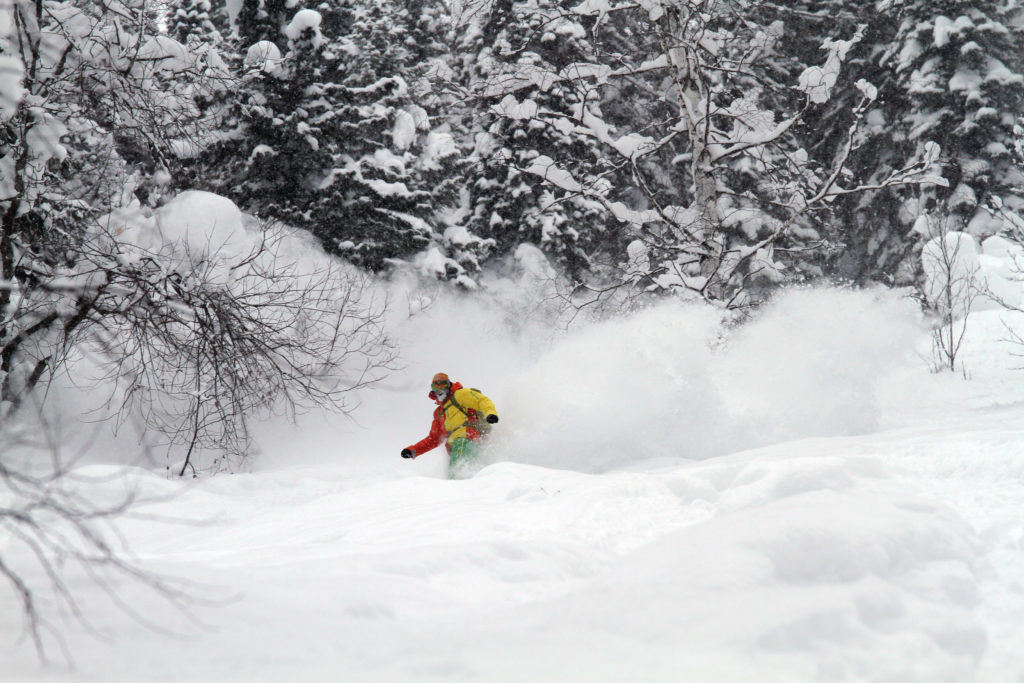

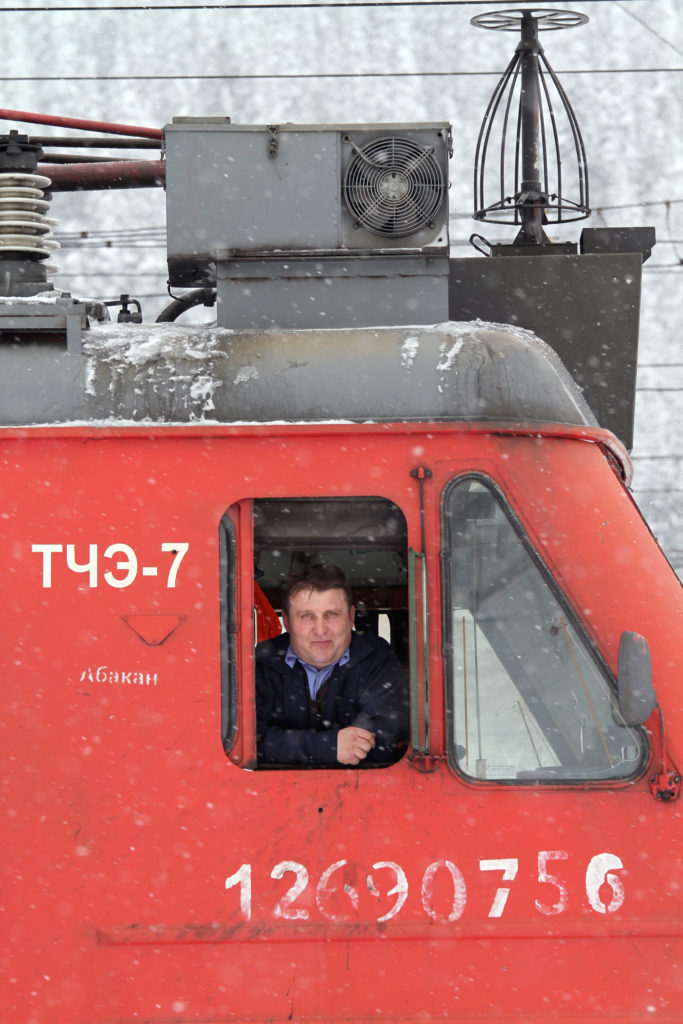
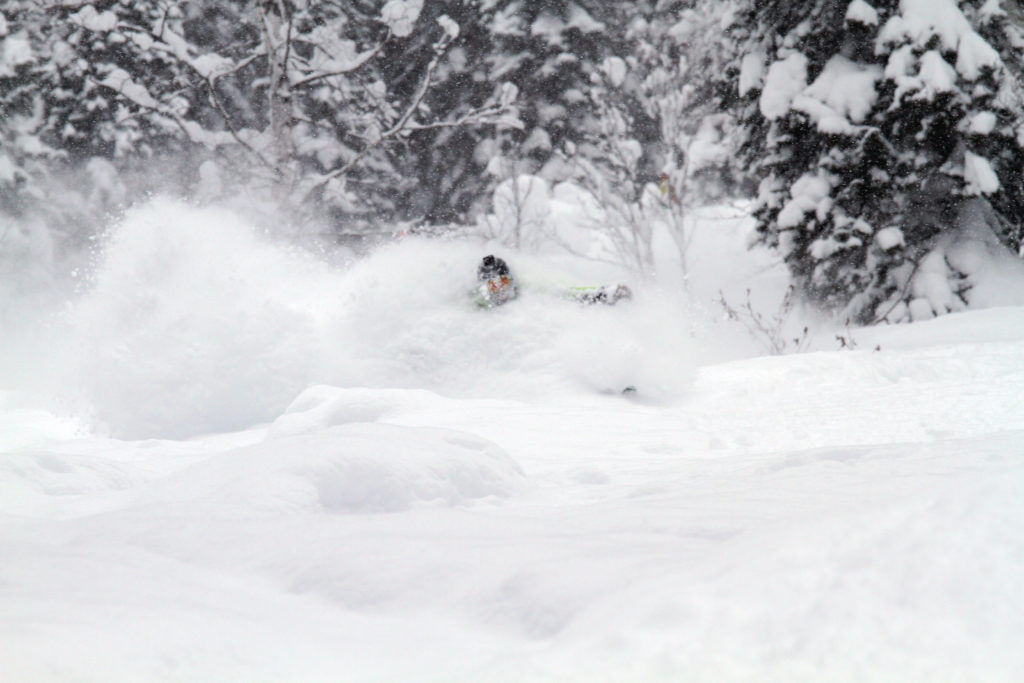
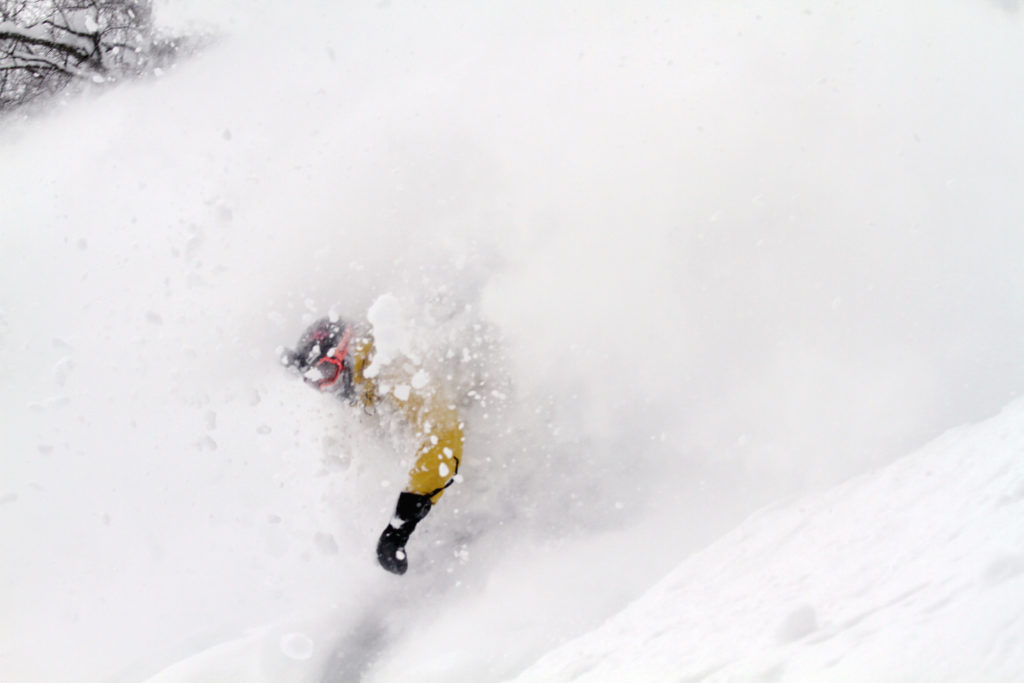



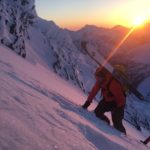
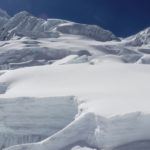






Hi !
Your report is stunning … looks absoluetly amazing!
Do you have any contacts there that you could share? We’re a group of 3 french guys looking for a “self made” trip there ! (no guide, just accomodation and meals)
looking forward for your answer !
M.